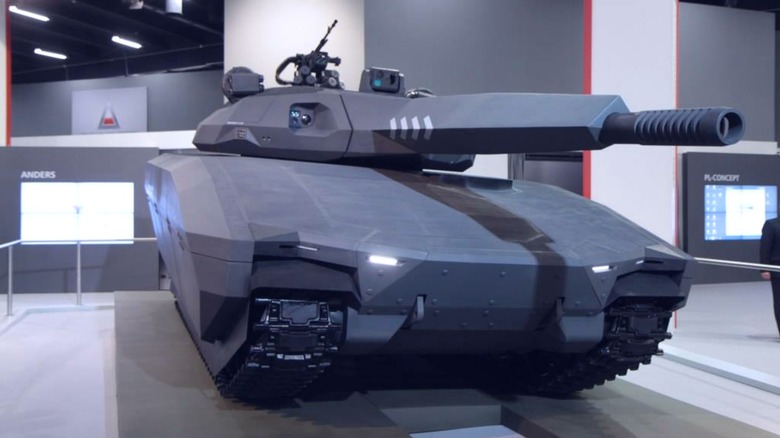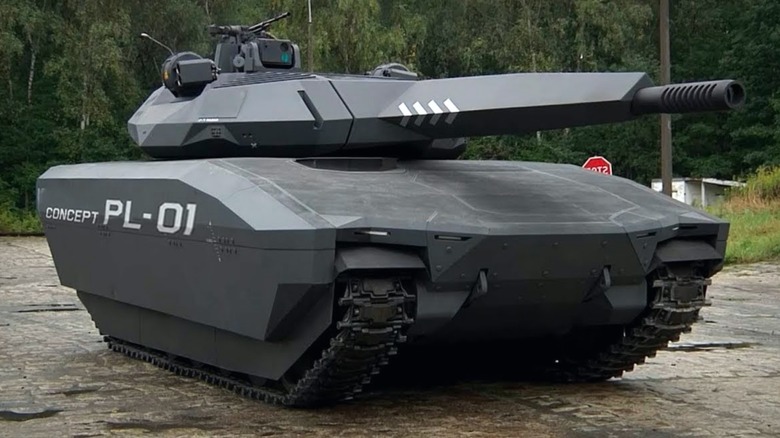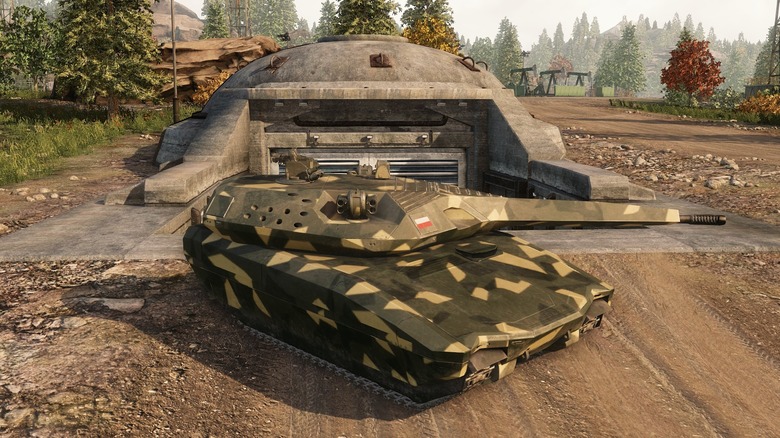Poland's Futuristic PL-01 Could Have Changed The Future Of Tank Design
Tank design has been refined for more than a century to create massive, agile, and deadly weapons of war. Initially, tanks were slow and marginally effective on the battlefields of World War I, but by World War II, new designs incorporated elements common today, including placing a large bore gun on a 360-degree rotating turret, multiple types of armor, and passive defensive capabilities that protect tanks from air attack.
While most nations with an army have tanks, not every country produces them. The United States, the United Kingdom, Germany, the Russian Federation, France, and other nations sell their tanks to other countries, but there's one country most don't consider when thinking about tank manufacturing: Poland. For most of its history, Poland purchased tanks and tank schematics from other nations to build out its armed forces.
With Russia on its border, Poland has become the third strongest NATO ally in terms of military strength, and the nation began development of the PL-01 concept tank in the 2000s before debuting it to the world in 2013. The PL-01 is an unusual-looking tank, as its angles and overall design are more reminiscent of science fiction than reality. While the tank didn't come to fruition and enter into service with the Polish Armed Forces, it represents an ambitious project that could have changed the way tanks would be designed in the future.
[Featured image by Ministerstwo Obrony Narodowej via Wikimedia Commons | Cropped and scaled]
What is the PL-01 concept tank?
Poland didn't start from scratch with its PL-01 tank design and used the Swedish Combat Vehicle 90, CV90120-T as a base. The PL-01 was intended for direct fire support, mine clearance, command, and more. Poland officially unveiled the design at the 2013 International Defense Industry Exhibition in Kielce, Poland, and the tank's look is impressive. Ideally, it would have entered service in 2018, but that didn't happen. The PL-01 would have been a stealth tank capable of masking its infrared signature.
In terms of specs, the PL-01's chassis was based on the Combat Vehicle 90. It had a seven-wheel-based suspension and multiple turrets. A rear-mounted unmanned turret provided air defense capabilities coupled with an active protection system and Chemical, Biological, Radiological, and Nuclear (CBRN) protection. The PL-01's engine could push it as fast as 43 mph on roads and 31 on rough terrain, with a maximum combat range of 310 miles.
Most notable was the tank's shell, which was comprised of a modular ceramic-aramid armor with plating covering the entire tank, including most of the main gun's muzzle. Additional reactive armor could be placed on the shell as well. The Pl-01's primary weapon was either a 105mm or 120mm cannon with an autoloader. It could fire up to six rounds per minute, and it could carry 45 rounds. Additional armaments included up to two 7.62mm machine guns or one 7.62mm and one 12.7mm gun, as well as a 40mm automatic grenade launcher.
Poland abandoned the project
Development of the PL-01 continued for two years after its unveiling, but in 2015, Poland scrapped the project. It's unclear why development was halted on the PL-01, but the answer may be in Poland's tank procurement from its allies. In 2023, Poland acquired three deliveries of American-made M1A1 Main Battle Tanks. These battle-tested tanks brought a level of power to the Polish Armed Forces that likely made the PL-01 less palatable.
Designing tanks isn't an inexpensive or easy prospect, and it's likely Poland would have spent billions in developing the PL-01 through all its testing phases and into mass production. While Poland could have gone that route, it was likely cheaper to simply acquire tanks from an ally, and the Abrams is no slouch in the armored warfare department, having proven its efficacy in the Gulf War and later conflicts.
While Poland didn't move forward with the PL-01, the tank exists digitally. You can play it in "Armored Warfare," and the model in the game is an accurate representation of the tank unveiled in 2013. Had it gone into production and proven successful, elements of its construction, from its armor shell to its active defense and stealth capabilities, may have impacted tank development for the foreseeable future. Unfortunately, this didn't happen, and the PL-01 remains little more than a curiosity.


